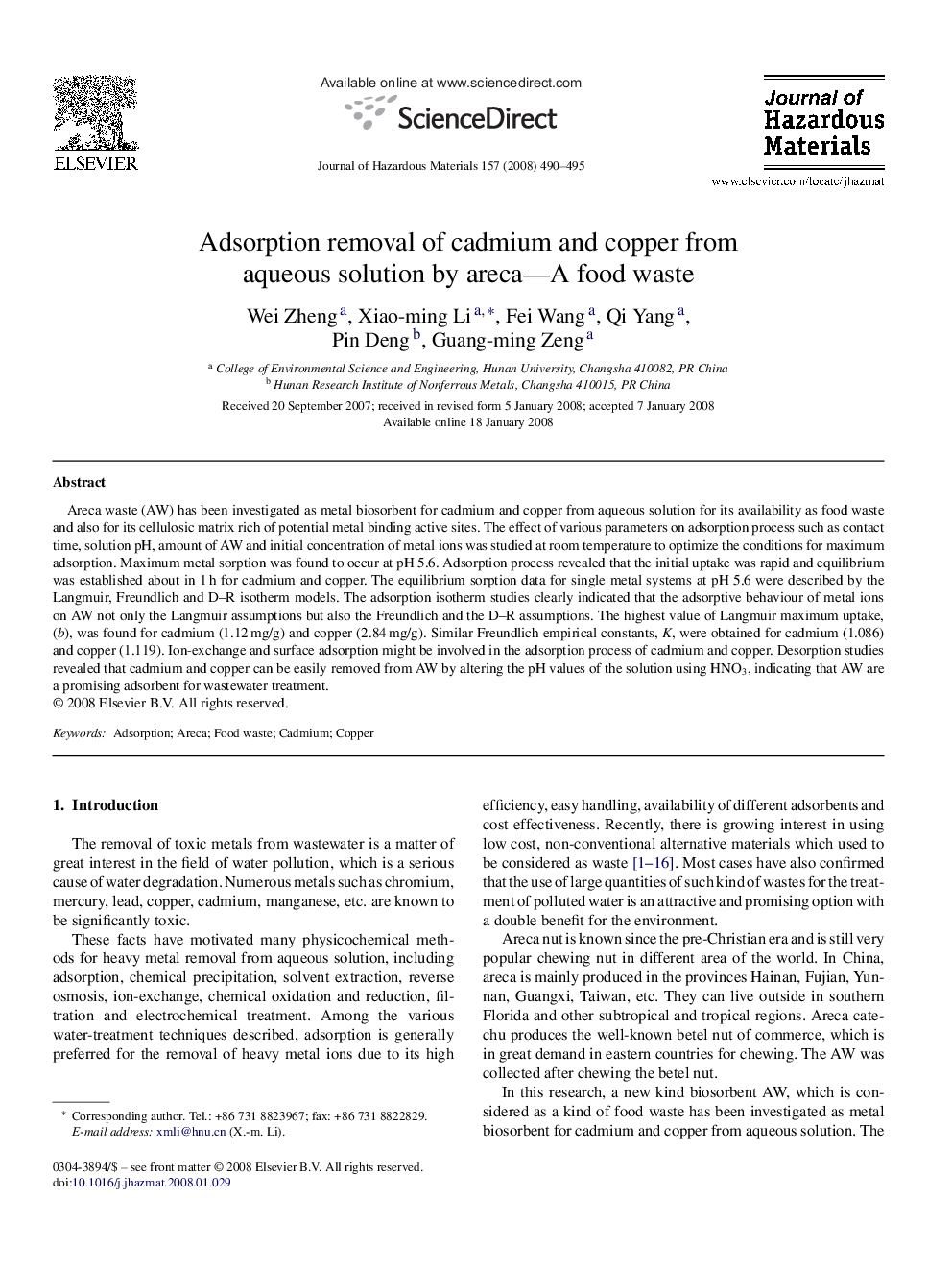| Article ID | Journal | Published Year | Pages | File Type |
|---|---|---|---|---|
| 582906 | Journal of Hazardous Materials | 2008 | 6 Pages |
Abstract
Areca waste (AW) has been investigated as metal biosorbent for cadmium and copper from aqueous solution for its availability as food waste and also for its cellulosic matrix rich of potential metal binding active sites. The effect of various parameters on adsorption process such as contact time, solution pH, amount of AW and initial concentration of metal ions was studied at room temperature to optimize the conditions for maximum adsorption. Maximum metal sorption was found to occur at pH 5.6. Adsorption process revealed that the initial uptake was rapid and equilibrium was established about in 1Â h for cadmium and copper. The equilibrium sorption data for single metal systems at pH 5.6 were described by the Langmuir, Freundlich and D-R isotherm models. The adsorption isotherm studies clearly indicated that the adsorptive behaviour of metal ions on AW not only the Langmuir assumptions but also the Freundlich and the D-R assumptions. The highest value of Langmuir maximum uptake, (b), was found for cadmium (1.12Â mg/g) and copper (2.84Â mg/g). Similar Freundlich empirical constants, K, were obtained for cadmium (1.086) and copper (1.119). Ion-exchange and surface adsorption might be involved in the adsorption process of cadmium and copper. Desorption studies revealed that cadmium and copper can be easily removed from AW by altering the pH values of the solution using HNO3, indicating that AW are a promising adsorbent for wastewater treatment.
Related Topics
Physical Sciences and Engineering
Chemical Engineering
Chemical Health and Safety
Authors
Wei Zheng, Xiao-ming Li, Fei Wang, Qi Yang, Pin Deng, Guang-ming Zeng,
